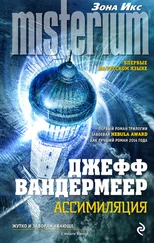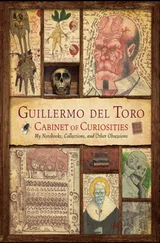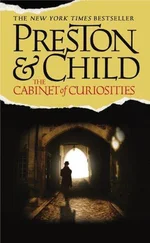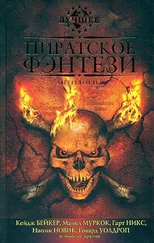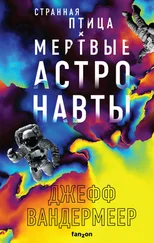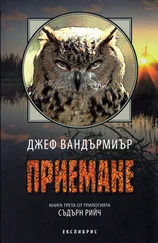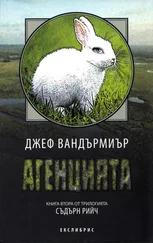Джефф Вандермеер - The Thackery T. Lambshead Cabinet of Curiosities
Здесь есть возможность читать онлайн «Джефф Вандермеер - The Thackery T. Lambshead Cabinet of Curiosities» весь текст электронной книги совершенно бесплатно (целиком полную версию без сокращений). В некоторых случаях можно слушать аудио, скачать через торрент в формате fb2 и присутствует краткое содержание. Жанр: Фэнтези, на английском языке. Описание произведения, (предисловие) а так же отзывы посетителей доступны на портале библиотеки ЛибКат.
- Название:The Thackery T. Lambshead Cabinet of Curiosities
- Автор:
- Жанр:
- Год:неизвестен
- ISBN:нет данных
- Рейтинг книги:5 / 5. Голосов: 1
-
Избранное:Добавить в избранное
- Отзывы:
-
Ваша оценка:
- 100
- 1
- 2
- 3
- 4
- 5
The Thackery T. Lambshead Cabinet of Curiosities: краткое содержание, описание и аннотация
Предлагаем к чтению аннотацию, описание, краткое содержание или предисловие (зависит от того, что написал сам автор книги «The Thackery T. Lambshead Cabinet of Curiosities»). Если вы не нашли необходимую информацию о книге — напишите в комментариях, мы постараемся отыскать её.
The Thackery T. Lambshead Cabinet of Curiosities — читать онлайн бесплатно полную книгу (весь текст) целиком
Ниже представлен текст книги, разбитый по страницам. Система сохранения места последней прочитанной страницы, позволяет с удобством читать онлайн бесплатно книгу «The Thackery T. Lambshead Cabinet of Curiosities», без необходимости каждый раз заново искать на чём Вы остановились. Поставьте закладку, и сможете в любой момент перейти на страницу, на которой закончили чтение.
Интервал:
Закладка:
Of wonderful breadth of shoulder, girth of chest, and length of arm, this is an individual who must be endowed with prodigious strength. A crooked back and bowed legs greatly add to the general grotesque hideousness of the figure as a whole.
This would be the first time that the government stepped in to dissuade Begg from unleashing his horrid assistant (ultimately, Griff would be housed at a facility—he died some time in 1918, where he had been employed in the bloody trench fighting which developed during the first world war), for, within an hour or two of putting Griff on the scene, Begg was summoned to the offices of the Home Secretary Lord Mauleverer, who told him that, since he could not put Begg (younger son of his good friend General Sir Henry Begg) off the scent, then he had better put him on it. There were two conditions: (1) Griff must be “retired” as soon as possible, and (2) Begg must sign the Official Secrets Act and consider himself to be working not for Cocky, the Bermondsey butcher, but for His Majesty the King. Begg agreed. Turning over all available evidence in the case, Mauleverer commissioned Begg, under oath to the monarch, to investigate the matter as discreetly as possible.
The fictional version is, of course, well known. Clue by clue, Begg tracked down the fairy murderer to a deserted mill in the heart of Kent, where, with a secret grant from “Blackmonk Academy” (easily identified as Greyfriars School), mad scientist “Professor Maxwell Moore” had found a way to grow plants so much like human beings they deceived everyone. His aim was to breed a race of “peace-loving plant people,” who would eventually take over from the human race. Begg’s first clue was in the cat’s refusal to eat vegetable matter.
Typical story-paper rubbish, of course, which satisfied the rumour-mongers when inevitably the tale got out in a garbled form. The truth was far more startling.
At this stage, we must introduce one of the key players—if not the key player—in this melodrama:
Orlando Bannister, D.D., the so-called Barmy Vicar of Battersea, at that time enjoying the living of St. Odhrán’s, a Methodist and a master of the Portable Harmonium, also amateur inventor, had successfully weighed the human soul but not the mind. As a missionary, he had served for some years in the jungles of Guatemala, where he had become known for his unorthodox views concerning the nature of both dumb animals and even dumber plants. His scientific investigations informed the nature of his theological views. His book Our Lord in All Things, in which he argued that every individual blade of grass, every leaf or flower, possessed a rudimentary soul, went into many editions and was in the library of every sentimental lady in the land. The Blavatskyians embraced him. Sales from his book funded his travels and his scientific investigations. A devout Methodist, he was of a missionary disposition and had travelled everywhere on what he amiably called “the Lord’s work.”
With a fellow evangelist Sir Ranald Frieze-Botham, D.D. founded missions not only in several leading zoological gardens but also a score or so of botanical gardens, most of them in New Zealand.
Having done all he could do for the creatures of the land, at least for the moment, Bannister turned his attention to the deep. He built his rather spectacular Underwater Tramway, or Submersible Juggernaut, in order to carry the story of Creation to the creatures of the sea. He had pretty much exhausted his attempts to bring the Gospel to the Goldfish (as the vulgar press had it) when he happened upon Pasteur’s study of microbes and realized his work had hardly begun.
Bannister and Frieze-Botham spent long hours discussing what means they could employ to isolate and introduce the word of God to the world of microorganisms. They did, in fact, receive some funding from Bannister’s old school after he had persuaded the board of governors that, if a will to do evil motivated those microbes, then the influence of the Christian religion was bound to have an influence for good. This meant, logically, that fewer boys would be in the infirmary and that, ultimately, shamed by the consequences of their actions, the germs causing, say, tuberculosis would cease to spread.
The crucial step, of course, was how to reduce a missionary, complete with all necessary paraphernalia, to a size tiny enough to contact individual—or, at any rate, small groups of—microbes.
As it happened, Frieze-Botham was in regular correspondence with the inventor Nikola Tesla, who at that point had lost his faith in his adopted homeland of the United States and planned to emigrate to England, where he felt his less conservative ideas would find more fruitful ground. Upon disembarking from the S.S. Ruritania, he was at once met by the two divines, who hurried him off to Bannister’s vicarage in leafy Balham.
There, Tesla was allowed to set up his Atomic Diminution Engine in what had been the vaults of an old abbey created on the site by the so-called Doubting Friars, or Quasi-Carmelites, in the thirteenth century.
Tesla needed an assistant, so the obvious person was John Wolt, who had been at school with Bannister and Frieze-Botham and was a great admirer of Tesla. He had already read his hero’s paper On Preparing a True Atomic Diminution Engine, printed privately in Chicago, and could think of no better way of serving both God and Science than helping carry the scriptures to the germs. “Better than trying to persuade the Germans,” he quipped, referring to Tesla’s humiliating experience in Berlin, which had rejected his electric recoilless gun, among other inventions.
Their work began apace.
Tesla, Wolt, and Frieze-Botham set to work unpacking and assembling the massive crates as they turned up from America. Soon an entire machine took shape in the church basement, and Tesla’s mood became increasingly elevated as his dynamos set to mumbling and whistling, then yelped into sudden life, drowning all other sound before being brought under purring control by their master.
“Messieurs, we have our power,” declared Tesla in his preferred language. His wife had always preferred it, too.
From what Begg pieced together and lodged under the “50 Years Act,” we can see that only Tesla, and perhaps Bannister, survived their attempts to shrink through what Tesla named “metamultiversal plates” down through the alternative universes to near-infinity. Practicing first on dead animals, then on human corpses obtained from Monk (which was what was turning up as parts of “fairies” or “Lilliputians” in the “meat” Monk disposed of through his usual means), the inventor and his colleagues were soon prepared to experiment on living animals and eventually on human subjects—and then themselves. All human subjects were volunteers and paid well, but only advanced to the first and second levels. Four died, all at what was called “the first level of descent.” Which was when Monk, who had supplied the corpses, now offered to take them off the vicar’s hands. He was growing rich on what they paid him and rather neglecting his usual dumping business.
When Tesla was satisfied that no harm could possibly come to human organs subjected to his electrics, he announced that he was ready to send a living creature straight through into what he termed the Intra-Universe, or Second Aether, down to worlds subtly different but ranged according to scale and mass so that the smaller one became the denser one, and the larger the more amorphous. The process had to be endured by degrees, stepping down a level at a time. All the laboratory guinea pigs used returned safely and indicated what was likely to happen to a human subject. At the first level, one remained small but visible and yet one’s normal weight. At the second level, one vanished from human sight, though one’s weight could still be measured as identical and the subject could be observed through a microscope; and at the third level, far more powerful instruments were needed until the traveller vanished completely from the scale, and weight became meaningless in the context. Wolt would, at his own request, be the first to be sent “downscale.”
Читать дальшеИнтервал:
Закладка:
Похожие книги на «The Thackery T. Lambshead Cabinet of Curiosities»
Представляем Вашему вниманию похожие книги на «The Thackery T. Lambshead Cabinet of Curiosities» списком для выбора. Мы отобрали схожую по названию и смыслу литературу в надежде предоставить читателям больше вариантов отыскать новые, интересные, ещё непрочитанные произведения.
Обсуждение, отзывы о книге «The Thackery T. Lambshead Cabinet of Curiosities» и просто собственные мнения читателей. Оставьте ваши комментарии, напишите, что Вы думаете о произведении, его смысле или главных героях. Укажите что конкретно понравилось, а что нет, и почему Вы так считаете.

